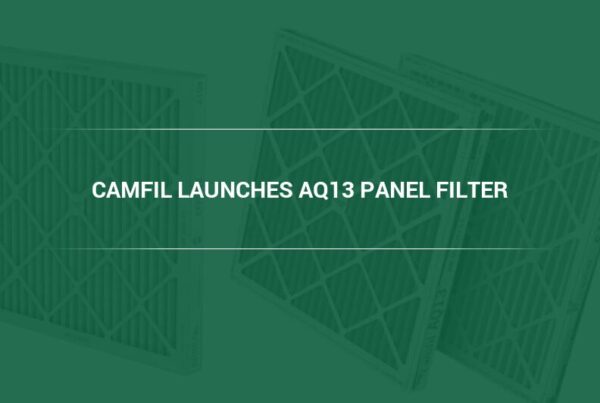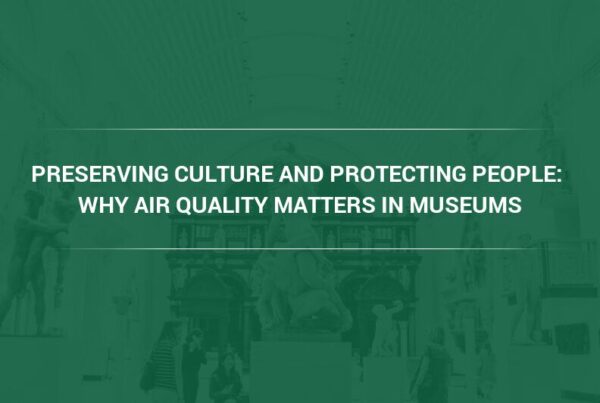Fireworks are a must-have for many celebrations in the United States, but are particularly characteristic of the Fourth of July. Continue reading to learn from Camfil’s air filtration specialists about the kinds of pollution emitted by firework displays and their effects on overall air quality, in addition to some of the other biggest contributors to poor summer air quality.
What Types of Air Pollution Come from Firework Displays?
Fireworks are made of gunpowder (or black powder), a blend of potassium nitrate, sulfur, and charcoal, which burns rapidly and explodes to serve as a propellant, in addition to a variety of metals that create their characteristic bright colors
When burned, gunpowder produces pollutants, usually including:
- Carbon dioxide (CO2), which can lead to headaches and dizziness at high levels.
- Carbon monoxide (CO), a toxic gas that, when inhaled, reduces oxygen flow throughout the body, causing dizziness, confusion, and potentially leading to organ damage and death.
- Nitrogen (N2), a stable gas that naturally constitutes the majority of the Earth’s atmosphere.
- Potassium carbonate (K2CO3), a caustic chemical used in industrial processes that can cause severe respiratory irritation inhaled.
- Potassium sulfide (K2S), which forms potassium hydrosulfide and potassium hydroxide in reactions with the moisture in the air; these chemicals can damage the eyes, burn the skin, and irritate the lungs, potentially leading to permanent respiratory tissue damage at high concentrations.
How Do Fireworks Affect Air Quality on the 4th of July?
A 2015 study in the journal Atmospheric Environment analyzed air quality data from 315 U.S. locations over fourteen years. Researchers discovered a 42% increase in particulate matter on July 4th and 5th compared to the surrounding days. In many regions, July 4th was consistently the most polluted day of the year, regardless of whether it fell on a weekend or weekday.
Other Sources of Poor Air Quality in the Summer
Wildfire Smoke
One of the most significant contributors to summer air pollution across North America is wildfire smoke, although in recent years, wildfire season has become longer and affected air quality year-round in some localities. Areas that aren’t directly affected by wildfires are often still affected by wildfire smoke when wind carries pollutants far and wide, causing haze and noticeable polluted air hundreds or thousands of miles away from the source of the fire.
Arid Weather Conditions
Weather-related factors can increase particulate matter levels in certain areas. Extended dry periods cause dirt, sand, and soil to become loose and dry, unlike their stable, compact state during other seasons. This loose ground is more easily dispersed by wind, vehicles, and foot traffic, potentially doubling particulate matter concentrations in the area.
Increased Road Traffic
With summer breaks for children in K-12 schools and students in universities, as well as desirable weather conditions in much of the country, people are most likely to take vacations during summer months. In addition to the increased particulate matter from cars kicking up dust, increased vehicle traffic means increased emissions from car exhaust, which includes pollutants such as particulate matter, nitrogen oxides, and volatile organic compounds (VOCs) even when vehicles’ emissions are within state-determined limits.
Ground-Level Ozone Formation
Ground-level ozone forms when specific pollutants react chemically at ground level, facilitated by sunlight. Common contributors to ozone formation include nitrogen oxides and volatile organic compounds (VOCs), originating from cars, power plants, industrial boilers, refineries, chemical plants, and other pollution sources. During the summer, hot, sunny weather in addition to increased car traffic creates significant increases in ozone in some areas.
High ozone levels can happen in any season, but they’re most common during hot, sunny summer weather. Additionally, ozone can travel long distances on the wind, reaching rural areas with typically good air quality where ozone formation is less frequent.
Summer Thunderstorms
The meteorological conditions created by summer thunderstorms, which differ from the conditions of thunderstorms and rain in other seasons, have been found to cause a specific distribution of plant spores and pollen that triggers asthma attacks in those affected by the disorder. Specific patterns of airflow are compounded by the humidity and static electricity in the air; downdrafts of cold air concentrate pollen and other allergens within the area of the storm and carry them into the clouds. Lightning, wind, and high humidity fragment these particles into much smaller pieces that can bypass our bodies’ natural barriers and enter the lungs directly when inhaled. This phenomenon, which has been referred to by researchers as “thunderstorm asthma” has been known to cause hospitalizations and even deaths in extreme cases, such as in a large wave in Melbourne in 2016.
Bonfires and Campfires
Bonfires and campfires, though an important summer activity for many, can contribute notably to air pollution. Wood burning is an incomplete combustion process, which releases a range of pollutants, including particulate matter (PM), carbon monoxide (CO), volatile organic compounds (VOCs), and various other toxic substances. Particulate matter, which includes fine particles that can penetrate deep into the respiratory system, poses significant health risks, particularly for individuals with pre-existing conditions such as asthma and chronic obstructive pulmonary disease (COPD). Additionally, the smoke from bonfires and campfires can irritate the eyes, nose, and throat.
Effects of Summer Pollution on Indoor Air Quality
In much of the United States, where summer temperatures frequently exceed one hundred degrees, air conditioning is essential for comfort in homes and public spaces. Over 90% of American households have some form of air conditioning, with 60% using central systems; 4.5 million commercial buildings used a cooling system in the U.S. as of 2012, and that number is sure to have grown in the past decade.
Most central air conditioning systems use panel filters that safeguard the equipment from large particles but are not efficient enough to shield building occupants from finer particulate matter or from gaseous pollutants. Consequently, HVAC systems continuously recirculate contaminated air and introduce polluted outdoor air into the airflow.
About Camfil Clean Air Solutions
For more than half a century, Camfil has been helping people breathe cleaner air. As a leading manufacturer of premium clean air solutions, we provide commercial and industrial systems for air filtration and air pollution control that improve worker and equipment productivity, minimize energy use, and benefit human health and the environment. We firmly believe that the best solutions for our customers are the best solutions for our planet, too. That’s why every step of the way – from design to delivery and across the product life cycle – we consider the impact of what we do on people and on the world around us. Through a fresh approach to problem-solving, innovative design, precise process control, and a strong customer focus we aim to conserve more, use less and find better ways – so we can all breathe easier.
The Camfil Group is headquartered in Stockholm, Sweden, and has 30 manufacturing sites, six R&D centers, local sales offices in 35+ countries, and about 5,600 employees and growing. We proudly serve and support customers in a wide variety of industries and in communities across the world. To discover how Camfil USA can help you to protect people, processes and the environment, visit us at www.camfil.us/
##
Media Contact:
Lynne Laake
Camfil USA Air Filters
T: 888.599.6620
E: Lynne.Laake@camfil.com
F: Friend Camfil USA on Facebook
T: Follow Camfil USA on Twitter
Y: Watch Camfil Videos on YouTube
L: Follow our LinkedIn Page



